Contents
- 🥢 Essential Ingredients for the Perfect Miso Soup
- 🍶 Dashi Broth Options: The Umami Base of Miso Soup
- 🍲 Classic Miso Soup Add-Ins: Texture, Nutrition & Flavor
- 👨🍳 Step-by-Step Miso Soup Recipe – Easy, Authentic & Ready in Minutes!
- 🛠️ Customizing Your Miso Soup – Make It Your Way!
- 🍽️ Serving Ideas & Storage Tips for Miso Soup
- 🧊 How to Store & Reheat Miso Soup Properly
Looking for a warm, nourishing dish that’s both quick to prepare and rich in flavor? Say hello to miso soup — a beloved staple of Japanese cuisine that brings comfort with every sip. 🇯🇵✨
This traditional soup is made with just a few simple yet powerful ingredients: miso paste, dashi stock, tofu, and seaweed. Despite its minimal ingredients, miso soup delivers a bold, savory umami flavor that soothes the soul and satisfies the palate.
Contrary to what many believe, making miso soup at home is incredibly easy — and fast! ⏱️ In just 15 minutes, you can enjoy a bowl of this comforting classic, using authentic ingredients that stay true to the traditional Japanese recipe.
🌿 Pro tip: The secret to rich, restaurant-quality miso soup lies in using high-quality miso paste and freshly prepared dashi stock. These two ingredients are the flavor backbone of the dish, giving it that deep, savory umami taste.
This recipe is also super flexible — whether you prefer adding green onions, wakame seaweed, silky tofu, or even mushrooms, miso soup can be customized to suit your taste buds and dietary needs. 🥢
Whether you’re craving a light, healthy snack, a warming appetizer, or a satisfying side dish, this homemade miso soup recipe is sure to become a regular on your menu. 🌟
🥢 Essential Ingredients for the Perfect Miso Soup
The beauty of miso soup lies in its simplicity — but behind that simplicity are a few key ingredients that give it its iconic taste, texture, and aroma. Whether you’re a first-time cook or a seasoned foodie, understanding these elements will help you craft a bowl of soup that’s both authentic and delicious. 🍲✨
🔑 Core Ingredients That Define Miso Soup
- Miso Paste – The heart of the flavor 🍥
- Dashi Broth – The savory, umami-rich base 🍶
- Tofu – For soft texture and protein 🧈
- Wakame Seaweed – Adds nutrients and ocean flavor 🌿
- Scallions (Green Onions) – For a fresh, bright finish 🌱
Let’s dive a little deeper into the types of miso paste — the soul of this beloved soup.
🧂 Types of Miso Paste: Choosing the Right Flavor
Miso paste is made by fermenting soybeans, sometimes with rice or barley, combined with salt and koji (a type of mold culture). The fermentation time and ingredients determine its color, taste, and intensity.
Here are the three most common varieties:
- 🤍 White Miso (Shiro Miso):
Light, mildly sweet, and the least salty. Great for beginners or those who prefer a subtle, gentle flavor. - 💛 Yellow Miso (Shinshu Miso):
Medium-bodied and well-balanced — it strikes a nice harmony between sweet and salty. A versatile choice for everyday miso soup. - ❤️ Red Miso (Aka Miso):
Aged longer, bolder, and saltier. This one brings a deep, complex umami punch and is perfect for those who love a stronger flavor.
👉 Tip: The color of the miso generally indicates its strength — the darker the miso, the more robust the flavor.
🧊 Storage & Cooking Tips
- Store miso paste in an airtight container in the refrigerator. It keeps for several months and may even improve in flavor over time.
- Never boil miso paste — always add it at the end of cooking, stirring it in gently. High heat can kill the beneficial probiotics and dull the flavor.
🍶 Dashi Broth Options: The Umami Base of Miso Soup
The soul of miso soup lies in its broth — and nothing brings out that signature savory depth quite like dashi. Dashi is a traditional Japanese stock that forms the base of countless recipes, but it truly shines in miso soup. Rich in umami, it enhances every spoonful with subtle complexity. 😌
Here are some of the most common and effective dashi broth options for miso soup lovers of all kinds:
🐟 1. Classic Dashi (Kombu + Katsuobushi)
The traditional and most flavorful choice, this dashi is made by simmering:
- Kombu (dried kelp) – for earthy, oceanic flavor
- Katsuobushi (dried, smoked bonito flakes) – adds a smoky, fishy depth
Together, they create a broth that is rich, savory, and deeply authentic — the gold standard for miso soup in Japanese kitchens. 🇯🇵
🍄 2. Vegetarian Dashi (Kombu + Dried Shiitake Mushrooms)
Looking for a plant-based version? You’re in luck!
Swap the fish flakes for dried shiitake mushrooms, which lend a meaty, umami flavor without any animal products. This combination still delivers a deeply satisfying broth that’s perfect for vegetarians and vegans. 🌱🍄
⚡ 3. Instant Dashi Powder (Quick & Convenient)
Short on time? Instant dashi powder is a pantry lifesaver!
Just mix the powder with hot water, and you have a flavorful base ready in seconds. While it’s not quite as rich as homemade dashi, it’s great for beginners or busy home cooks. 🕒
💡 Pro Tip: If you must use water or plain vegetable broth, be aware that it won’t offer the same complex, umami-packed flavor that true dashi provides. Use it only if you’re in a pinch.
🍲 Classic Miso Soup Add-Ins: Texture, Nutrition & Flavor
Now that your broth is ready, it’s time to bring your miso soup to life with classic toppings. These traditional ingredients aren’t just delicious — they create the perfect balance of texture and nutrients. 🌟
🧈 Tofu (Silken or Soft)
Cut into small cubes, tofu adds a gentle creaminess and a subtle protein boost. It soaks up the flavor of the broth while maintaining a soft, melt-in-your-mouth texture.
🌿 Wakame Seaweed
This dried seaweed expands in the hot broth, offering a sweet, slightly briny ocean flavor. It’s packed with iodine, minerals, and natural umami — and adds a nice contrast to the tofu.
🌱 Scallions (Green Onions)
Thinly sliced and sprinkled on top, scallions give the soup a fresh, zesty finish. Their mild onion flavor complements the miso perfectly and brightens every bite.
🍵 Together, these add-ins create a delicious harmony — combining smooth, savory, and fresh in every spoonful. Plus, they keep your soup light, healthy, and full of traditional Japanese character.
👨🍳 Step-by-Step Miso Soup Recipe – Easy, Authentic & Ready in Minutes!
Making miso soup at home is surprisingly simple — and incredibly rewarding. With just a few ingredients and the right technique, you can enjoy a bowl of comforting, umami-packed soup that tastes just like what you’d find in a Japanese restaurant. 🇯🇵💯
Follow these easy steps to create a nourishing and flavorful miso soup in your own kitchen:
🔥 Step 1: Prepare the Broth (Dashi)
The first step is building a rich, savory dashi broth — the flavorful foundation of any good miso soup. You have a few options here depending on your time and dietary needs.
🍘 Traditional Dashi (from scratch):
- Soak kombu: Place a 4–6 inch piece of dried kombu in 4 cups of water. Let it soak for 20–30 minutes (or overnight in the fridge for more flavor).
- Heat gently: Slowly warm the kombu water over medium heat. Just before it boils, remove the kombu.
- Add bonito flakes: Toss in a handful of katsuobushi (dried bonito flakes) and bring the mixture to a gentle boil.
- Simmer & strain: Turn off the heat after 30–60 seconds of boiling. Let the flakes settle, then strain the broth through a fine sieve.
⚡ Quick Option: Instant Dashi
- Dissolve instant dashi powder into hot water according to the package instructions. It’s a great shortcut for busy cooks, and still delivers solid flavor!
🧠 Important tip: The broth should be hot but not boiling when you add miso paste. High heat can destroy its delicate flavor compounds and kill the probiotic benefits of fermented miso.
🥣 Step 2: Add the Miso Paste (Without Boiling)
Once your dashi broth is ready and gently steaming:
- Scoop out some hot broth into a small bowl or ladle.
- Add 2–3 tablespoons of miso paste (adjust to taste).
- Whisk or stir the paste in the small bowl until fully dissolved.
- Return the mixture to the pot and stir gently to combine.
This technique helps incorporate the miso evenly and smoothly without overheating it.
🍴 Step 3: Add Classic Ingredients
Now it’s time to finish your soup with the classic add-ins:
- 🧈 Tofu: Gently add cubed silken or soft tofu into the warm broth.
- 🌿 Wakame seaweed: A small pinch of dried wakame goes a long way — it will expand quickly in the hot soup.
- 🌱 Scallions: Sprinkle freshly chopped green onions on top just before serving for a burst of freshness.
Let everything warm through for 1–2 minutes — no need to boil!
✅ Final Tip:
Serve your miso soup immediately for the best taste and texture. Miso soup doesn’t store well once the miso paste is added, so it’s best enjoyed fresh. 😋🍵
🌀 Incorporating Miso Paste the Right Way: Preserve Flavor & Nutrition
One of the most important steps in making miso soup is adding the miso paste correctly. Miso is full of flavor and natural probiotics, which can be lost if it’s boiled. That’s why this step requires a little care — but it’s easy once you know how! 🧠💡
🥄 How to Add Miso Paste Without Losing Flavor
- Scoop out a small amount of your hot (but not boiling) dashi broth — about ½ cup — into a separate bowl or ladle.
- Add 2–3 tablespoons of miso paste (white, red, or a mix, depending on your preference).
- Whisk or stir until smooth to create a miso slurry.
- Stir the slurry back into the main pot gently and evenly.
🚫 Never boil miso paste. High heat destroys the paste’s delicate taste and beneficial bacteria. Always add it at the end, once the soup is off the heat or gently simmering.
🎨 Miso Types and Flavor Variations
- White miso (shiro) – Mild and slightly sweet; great for a light, mellow soup.
- Red miso (aka) – Bold, salty, and rich; perfect for deep umami flavor.
- Mixed miso (awase) – A blend of white and red, offering a balanced profile for all palates.
Choose your miso based on your desired flavor intensity. Each brings something unique to the bowl! 🍥
🥗 Adding Ingredients for Texture, Flavor & Nutrition
Once your miso paste is incorporated, it’s time to enhance the soup with delicious add-ins that add texture, color, and nutrients. These ingredients should be added after the miso paste to preserve their freshness and delicate structure.
🧈 Silken Tofu (Soft & Creamy)
- Cut into small cubes and add gently to avoid breaking.
- Adds protein and a smooth, silky texture that contrasts beautifully with the broth.
🌿 Wakame Seaweed (Tender & Nutrient-Rich)
- Just a pinch of dried wakame will expand in the hot soup.
- Adds a slightly sweet, oceanic flavor and a soft bite.
🌱 Green Onions (Fresh & Bright)
- Thinly sliced scallions bring a mild onion bite and vibrant color.
- Sprinkle on top just before serving for the best texture and taste.
🍄 Optional Additions for Extra Depth
Want to customize your soup? Try adding:
- Sliced mushrooms (shiitake, enoki, or oyster)
- Thin strips of daikon radish
- Spinach leaves or baby bok choy
These ingredients add layers of flavor and keep your miso soup exciting. Just be sure to add them after the miso paste and warm gently — no boiling! 🫧
🔄 Mix gently to keep delicate ingredients like tofu intact. Miso soup is meant to be light, balanced, and soothing.
🛠️ Customizing Your Miso Soup – Make It Your Way!
One of the best things about miso soup is how flexible and customizable it is. Whether you’re vegetarian, vegan, gluten-free, or simply looking to change things up, miso soup adapts beautifully to your lifestyle and taste preferences. 🌍✨
🌱 Vegetarian & Vegan Miso Soup Variations
Traditional miso soup often includes bonito flakes (fish) in the dashi, but it’s super easy to create a flavorful plant-based version that’s just as rich and satisfying — no animal products needed.
✅ How to Make It Vegan or Vegetarian:
- Use kombu (dried kelp) and dried shiitake mushrooms to make a savory, umami-rich vegan dashi broth.
- Skip fish-based ingredients like:
- Bonito flakes
- Dried sardines
- Dried shrimp
- Stick with classic vegan toppings:
- Silken tofu
- Wakame seaweed
- Green onions
- Fresh mushrooms (shiitake, oyster, enoki)
🔍 Check your miso paste label – Most are vegan, but some may contain added dashi or fish stock. Look for one that says vegan or fish-free to be sure.
This version is 100% plant-based, full of nutrients, and incredibly comforting. 🥬🍄🍲
🌾 Making Miso Soup Gluten-Free
While miso soup is naturally light and simple, it’s important to note that not all miso pastes are gluten-free. Some varieties contain barley or wheat, which are common sources of gluten.
✅ Tips for Gluten-Free Miso Soup:
- Choose miso paste labeled “gluten-free” – usually made from rice or pure soybeans without barley or wheat.
- Avoid soy sauce and flavored stock powders that may contain gluten.
- If you want extra seasoning, use tamari sauce – a gluten-free soy sauce alternative.
- Use homemade kombu dashi or gluten-free vegetable broth for the base.
🚫 Avoid using regular miso paste or any instant dashi that doesn’t clearly state it’s gluten-free.
This version is safe for people with celiac disease or gluten sensitivity, and it still delivers the rich, savory flavor miso soup is known for.
🌈 Create Your Own Flavor Adventure
No matter your dietary needs, miso soup is your canvas:
- Want it spicier? Add a dash of chili oil or sliced fresh ginger.
- Need more protein? Try edamame or extra tofu.
- Love crunch? Top with crispy shallots or a sprinkle of sesame seeds.
The possibilities are endless — just keep the balance of umami, texture, and warmth, and you’ll always have a bowl of comfort waiting. 🧡🍵
🍽️ Serving Ideas & Storage Tips for Miso Soup
Miso soup is more than just a side dish — it’s a versatile, comforting meal component that pairs beautifully with a variety of foods. Whether you’re serving it as a starter, a light lunch, or part of a full Japanese-style dinner, knowing how to pair, store, and reheat it properly can take your miso soup experience to the next level. 🌟
🥢 Perfect Pairings for Miso Soup
Miso soup shines brightest when paired with simple, complementary dishes that highlight its savory, umami-rich broth.
🍱 Classic Pairings:
- Steamed white rice or brown rice – The perfect neutral partner.
- Sushi or sashimi – Light, fresh, and beautifully balanced with warm soup.
- Pickled vegetables (tsukemono) – Add brightness and crunch.
- Green salad with sesame dressing – Refreshing and nutritious.
🧋 Topping Ideas to Serve Fresh:
- Cubes of silken tofu – Creamy and satisfying.
- Wakame seaweed – Soft and subtly sweet.
- Thinly sliced green onions – A touch of freshness and color.
🥚 Want a more filling bowl? Add a soft-boiled egg, some cooked noodles (like udon or soba), or a sprinkle of sesame seeds for a gourmet upgrade.
🍤 Small Plate Pairings:
- Grilled fish (like salmon or mackerel) – Adds protein and richness.
- Tempura vegetables – Crispy, light, and a perfect contrast to the soup’s warmth.
- Tamago (Japanese omelet) – Slightly sweet and comforting.
These pairings create a balanced, satisfying meal without feeling too heavy — ideal for lunch or dinner! 🍚🍵
🧊 How to Store & Reheat Miso Soup Properly
To keep your miso soup tasting fresh and flavorful, proper storage and gentle reheating are key. Here’s how to do it right:
🧼 Storing Miso Soup:
- Let the soup cool to room temperature before storing.
- Use an airtight glass or BPA-free plastic container.
- Store tofu, seaweed, and green onions separately if possible to keep them from getting mushy.
- Refrigerate for up to 2–3 days.
⚠️ Avoid metal containers — they can alter the soup’s flavor over time due to the salt content in miso.
🔥 Reheating Miso Soup:
- Reheat on the stovetop over low heat or in the microwave on medium power.
- Do not let it boil! High temperatures can destroy the delicate flavor and probiotics in the miso paste.
- Add any fresh toppings (tofu, scallions, wakame) after reheating to keep their textures intact.
♻️ Bonus Tip: You can prepare the broth in advance and store it separately. Add miso paste and toppings fresh just before serving for the best flavor and texture every time.


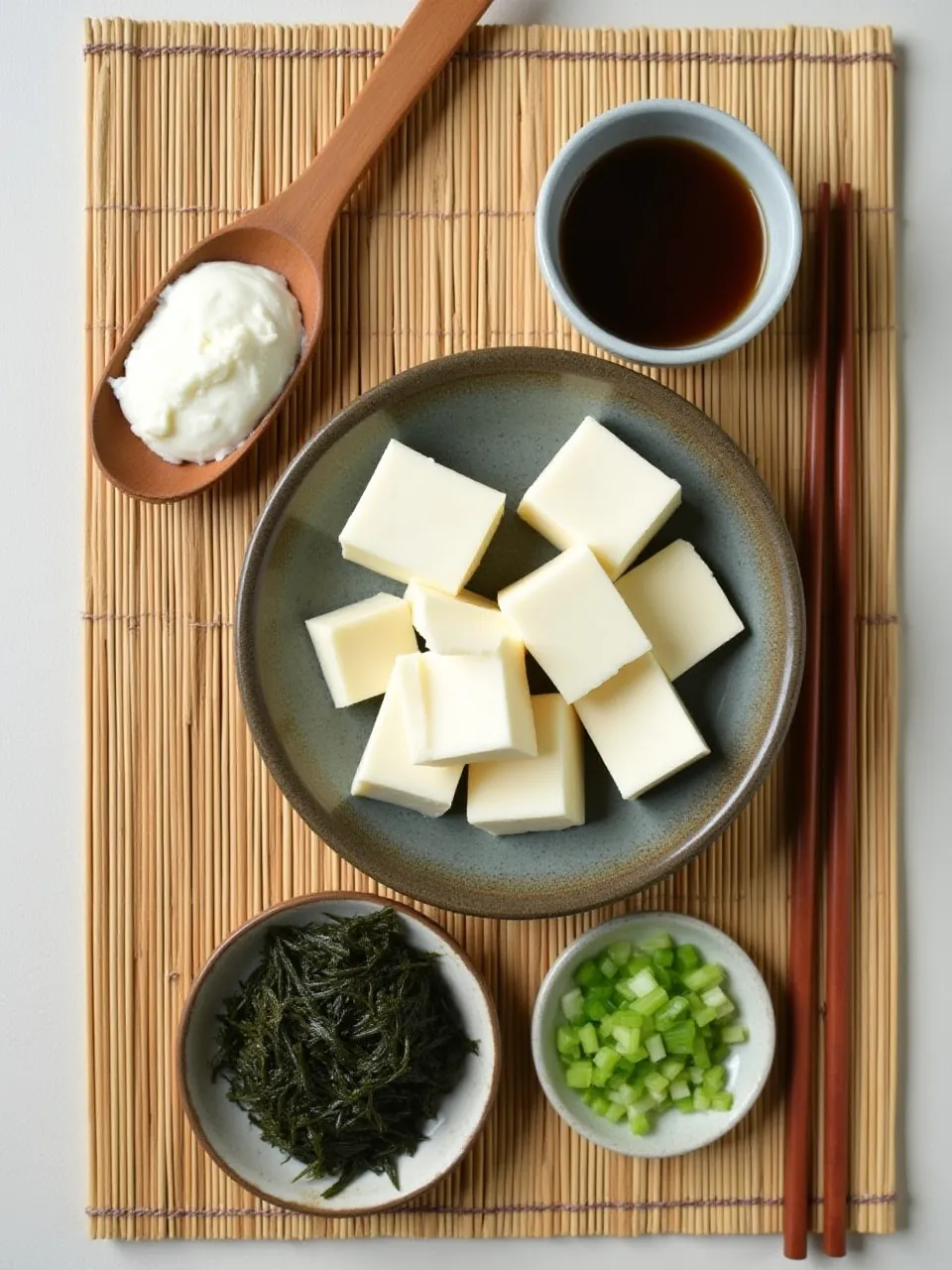
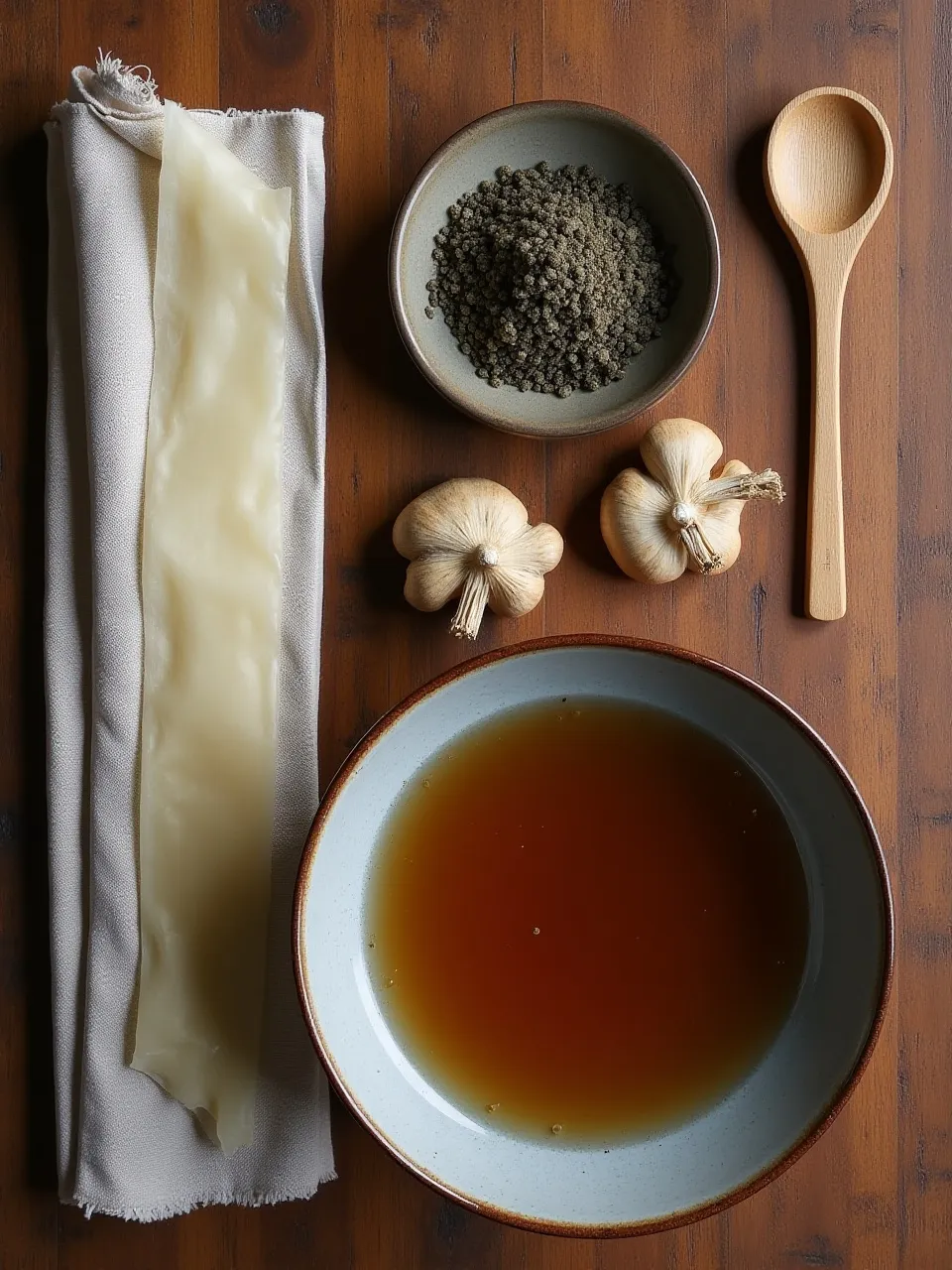
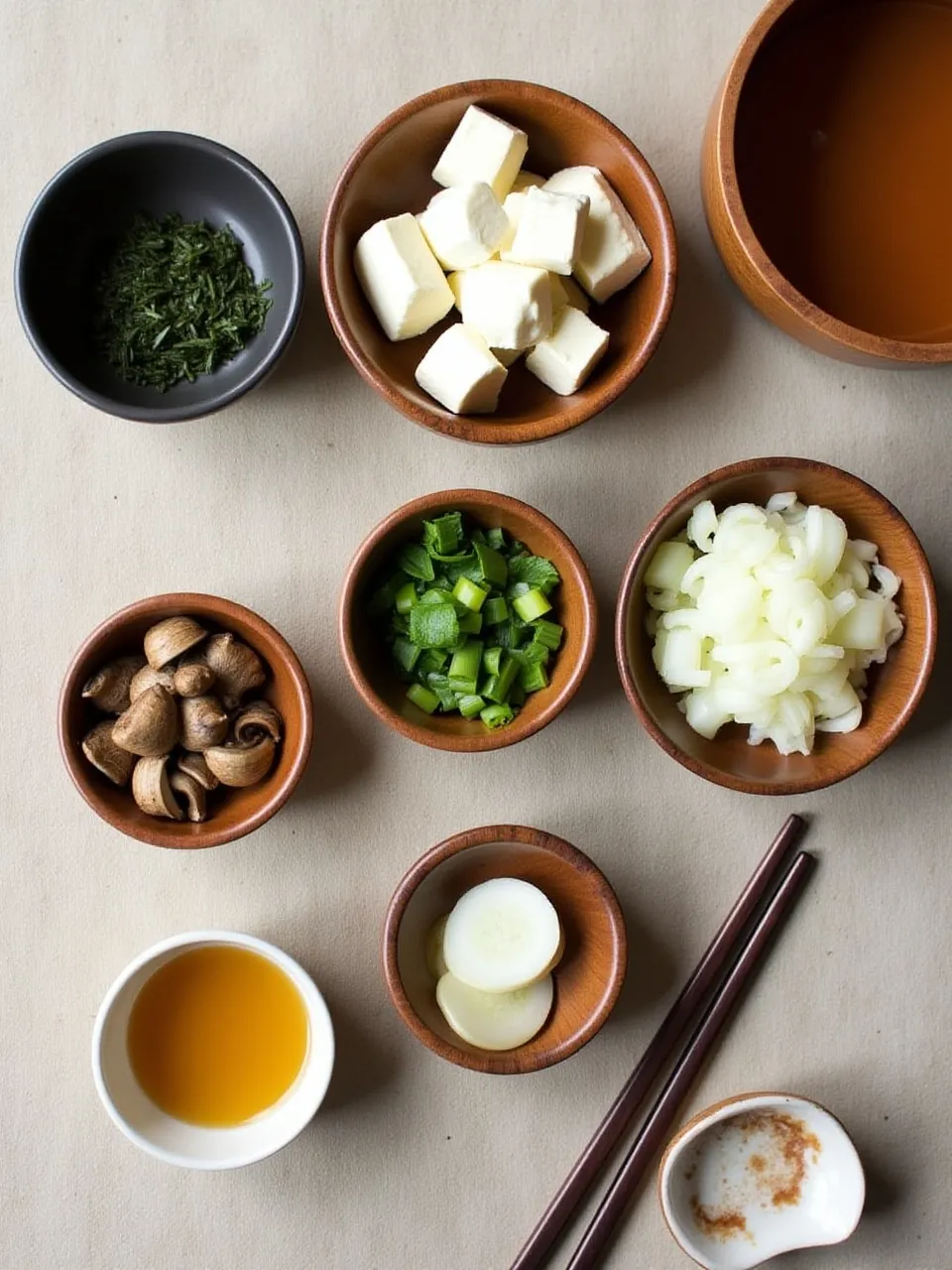


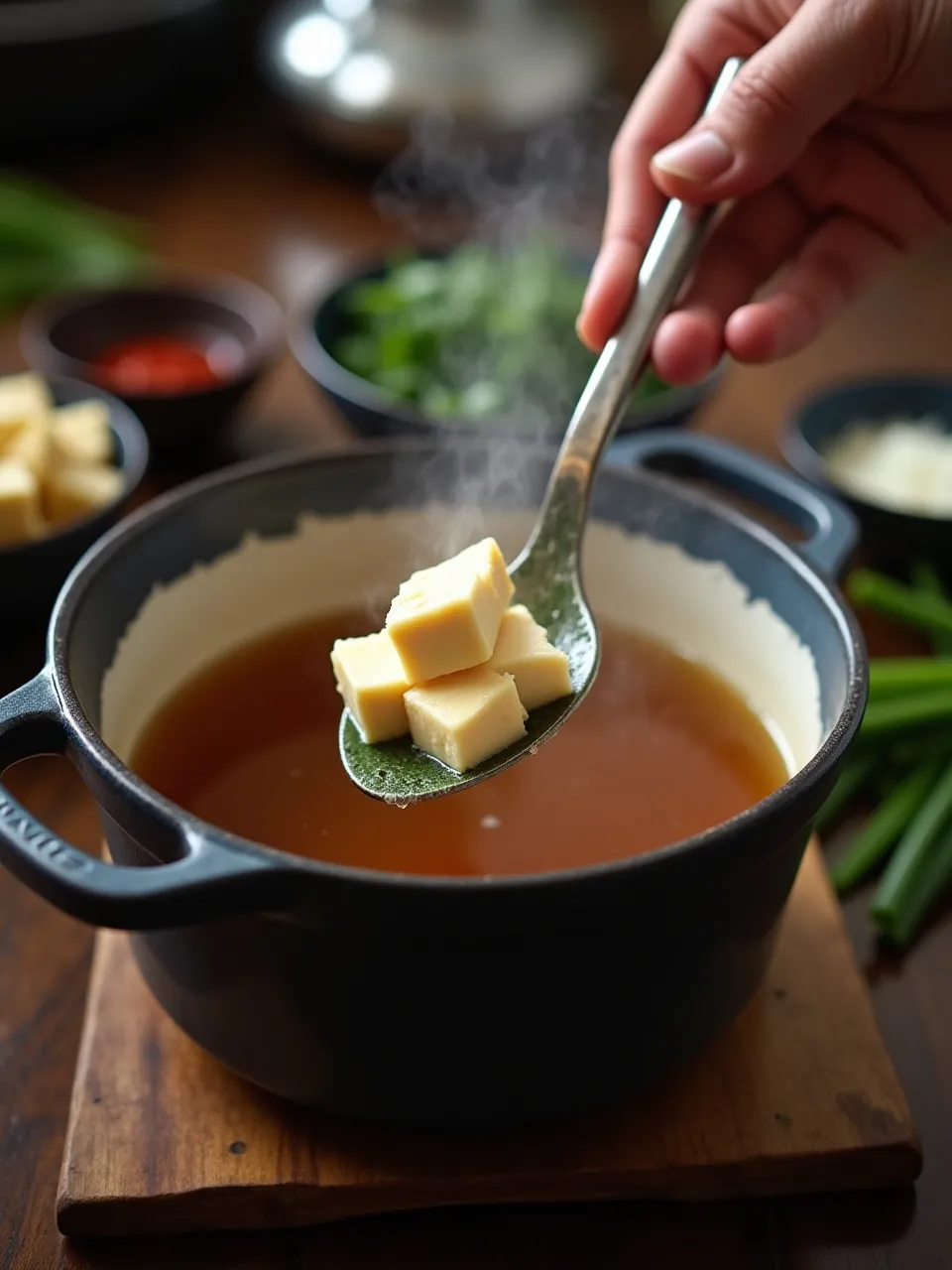
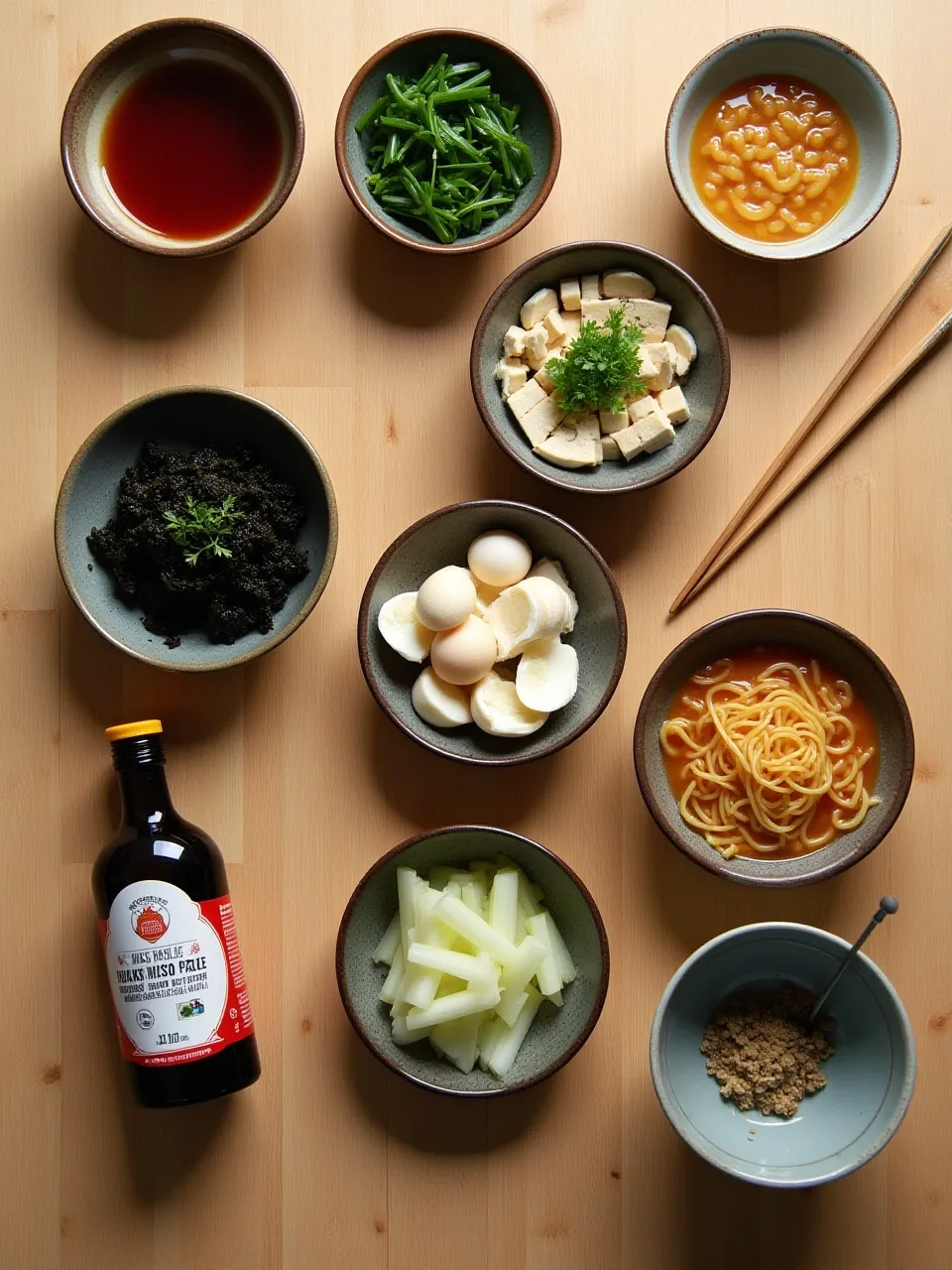





Sounds delicious and easy! Definitely adding this to my weeknight dinner rotation.